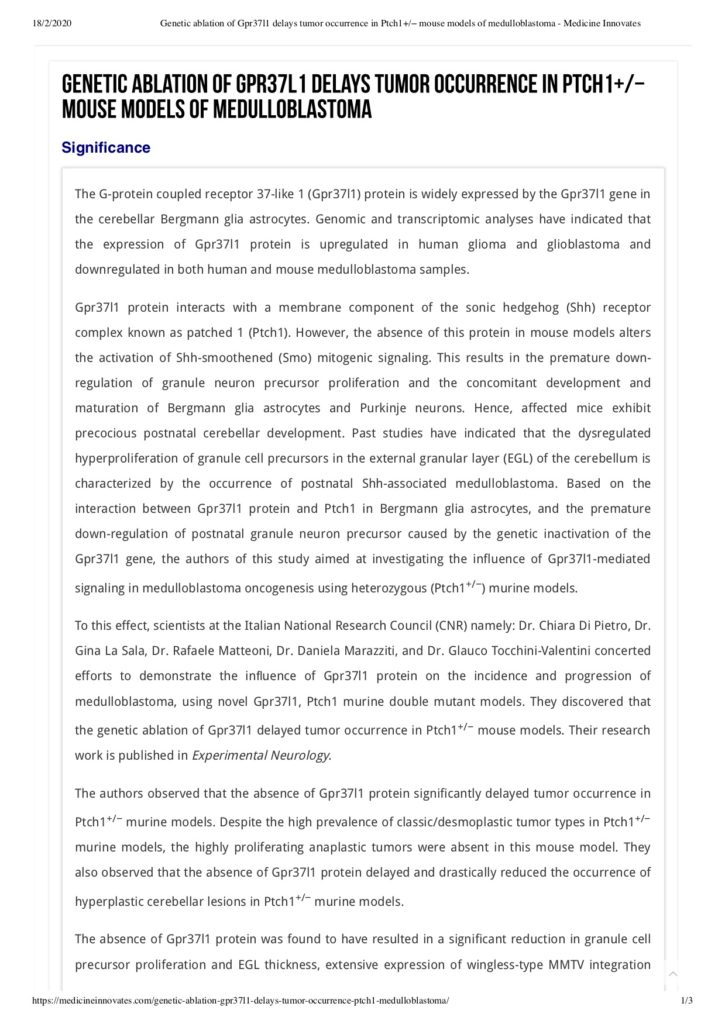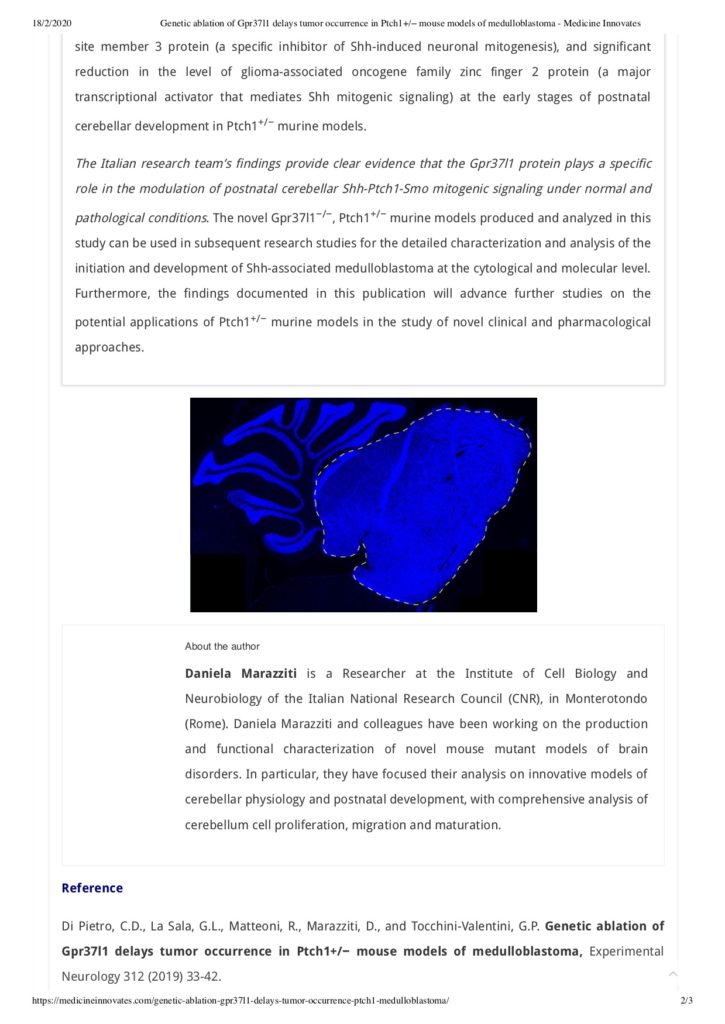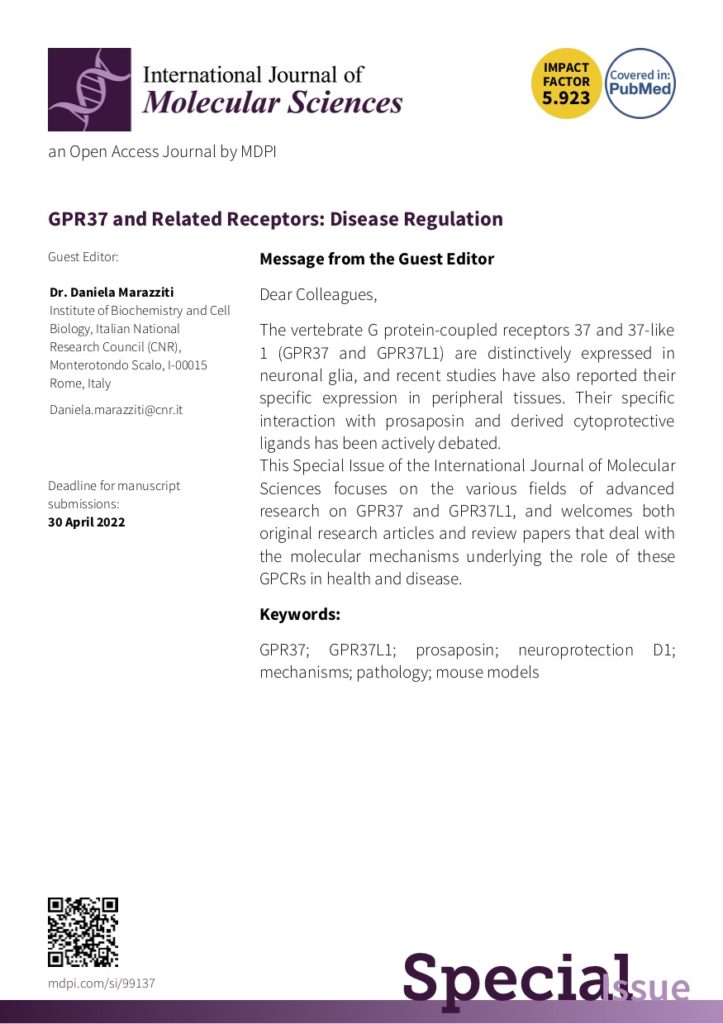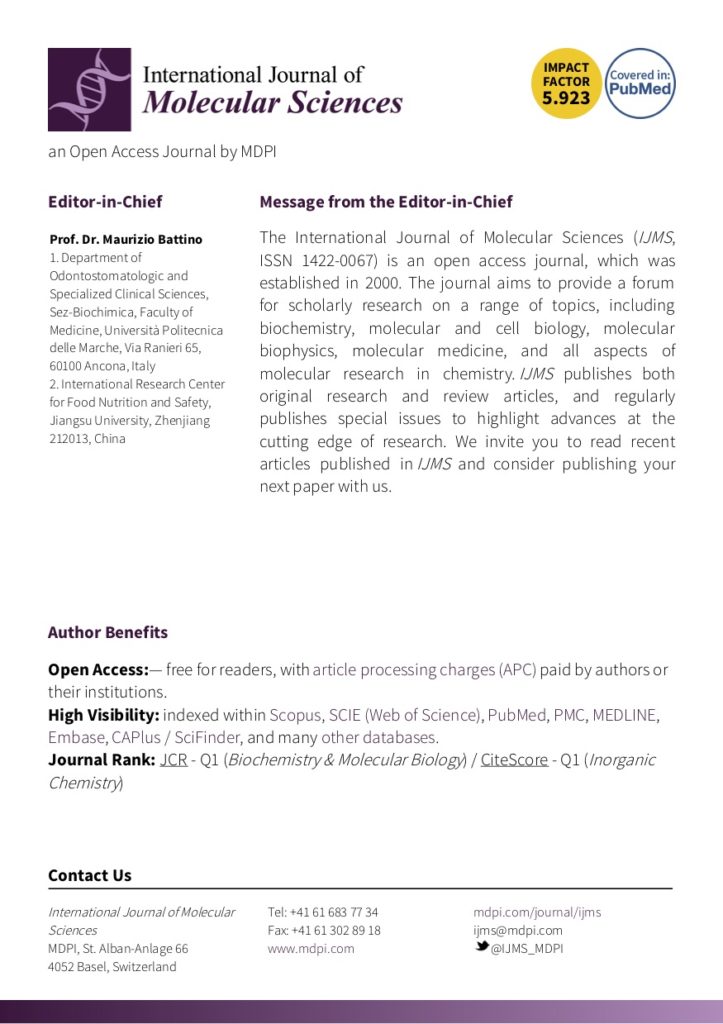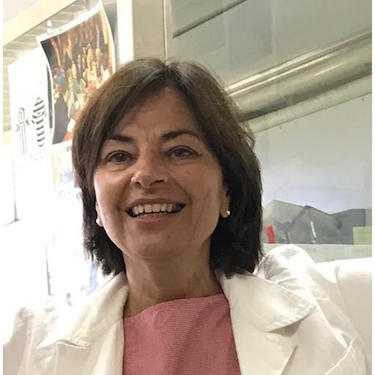
Mouse mutant models of brain development
In the last decade we have been working on the production and functional characterization of novel mouse mutant models of brain development and related disorders. In particular, we have focused our research interests on innovative models of postnatal cerebellar physiology and development, with comprehensive analysis of cerebellum cell proliferation, migration and maturation. We have therefore led the design and application of original murine mutants of orphan G-protein coupled receptors, which specifically modulate cerebellar cell proliferation and differentiation, in normal or pathological conditions, with production of novel in vivo models of cerebellar tumors like medulloblastoma. We have conducted detailed studies of altered development and differentiation of mouse cerebellar granule and Purkinje neurons and Bergmann glia astrocytes, at various peri- and postnatal stages (postnatal day 0 to 25) and in adulthood. We have originally described novel functional roles of Bergmann glia astrocytes in cerebellar cell proliferation and differentiation.
In addition, we have been participating in the histopathology screening pipelines of the International Mouse Phenotyping Consortium (IMPC; mousephenotype.org), the INFRAFRONTIER European Union’s Landmark Infrastructure (infrafrontier.eu) and related International Consortia (EUMORPHIA, EUMODIC, EUCOMM-EUCOMMTools, PHENOSCALE, etc.), for large-scale, integrated and standardized production, primary and specialized phenotyping, dissemination of mouse mutant strains as novel in vivo model human diseases
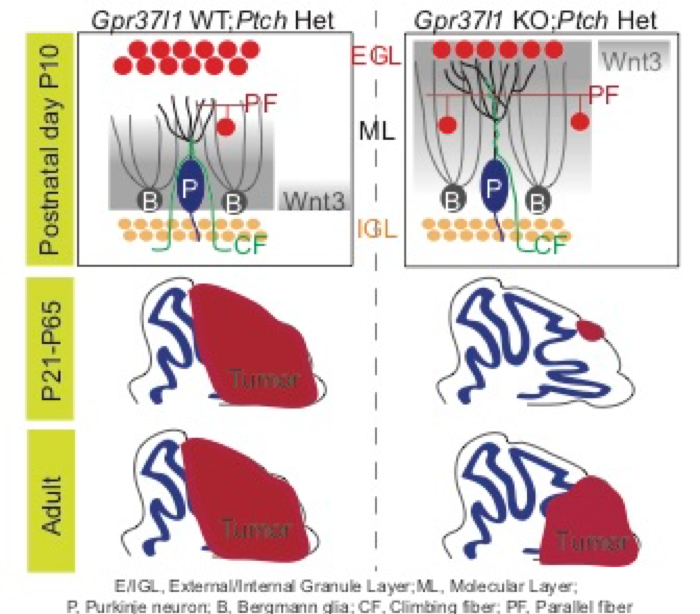
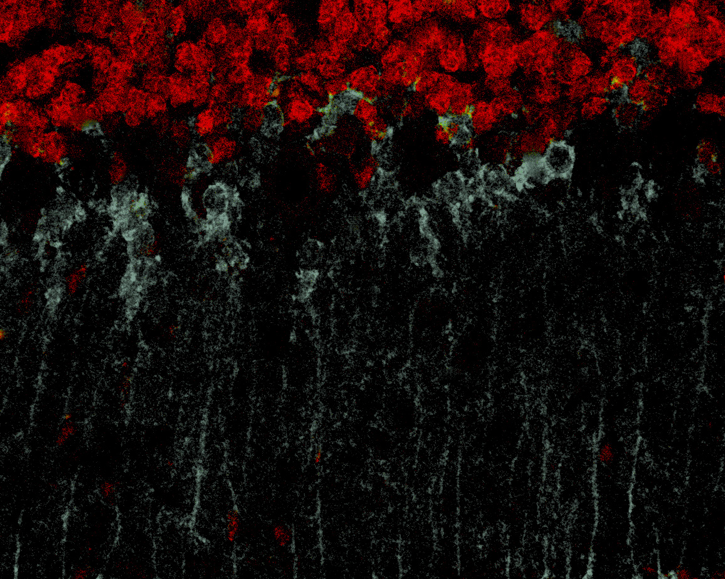
Education
- 1979-1984: Laurea Degree cum laude in Biological Sciences, University of Pisa, Italy1984-1988:
- Postdoctoral fellow, Cell Biology Programme, European Molecular Biology Laboratory (EMBL), Heidelberg, Germany.
Positions
- Since Dec. 1988: Researcher, Consiglio Nazionale delle Ricerche (Italian National Research Council) Institute of Cell Biology and Neurobiology/Institute of Biochemistry and Cell Biology, “A. Buzzati-Traverso” Int. Campus, Monterotondo (Rome), Italy
- 1989: Visiting Research Associate, University of Chicago, Dept. of Molecular Genetics (USA).
Honours/Awards
- March 2017: National Qualification for Associated Professorship in Applied Biology
- November 2017: Eligibility for Associated Professorship in Applied Biology, Department of Pharmacology, University of Pisa, Italy
- From 2014: Expert Reviewer for “Registro di esperti revisori per la valutazione scientifica della ricerca italiana (Reprise), Italian Ministry for Education, Universities and Research (MIUR). ERC area: LS2.
- Expert Reviewer (ERC areas LS5, LS3), Scientific Evaluation Committees, Italian Ministry for Education, Universities and Research: National Evaluation of Research Quality (VQR) 2011-2014; Research Program of National Interest (PRIN) 2015.
D. Marazziti, C. Di Pietro, E. Golini, S. Mandillo, G. La Sala, R. Matteoni, and G. P. Tocchini-Valentini (2013). Precocious cerebellum development and improved motor functions in mice lacking the astrocyte cilium-, patched 1-associated Gpr37l1 receptor. Proc Natl Acad Sci USA 110, 16486-16491.
G. La Sala, D. Marazziti, C. Di Pietro, E. Golini, R. Matteoni and G. P. Tocchini-Valentini (2015). Modulation of Dhh signaling and altered Sertoli cell function in mice lacking the GPR37-prosaposin receptor. FASEB J 29, 2059-2069.
M. Hrabe de Angelis & The EUMODIC Consortium (…D. Marazziti…) (2015). Analysis of mammalian gene function through broad-based phenotypic screens across a consortium of mouse clinics. Nature Genetics 47, 969-978.
T. F. Meehan & The International Mouse Phenotyping Consortium (……D. Marazziti ….) (2017). Disease model discovery from 3,328 gene knockouts by The International Mouse Phenotyping Consortium. Nature Genetics 2017 49: 1231-1238.
C. Di Pietro, G. La Sala, R. Matteoni, D. Marazziti, G. P: Tocchini-Valentini (2019). Genetic ablation of Gpr37l1 delays tumor occurrence in Ptch1+/- mouse models of medulloblastoma. Exp Neurol 312, 33-42.

Project member:
PRIN-MIUR 2017: Early dysfunctions of intercellular signalling in brain disorders (n. 20175C22WM)
2019-2022
It. National Research Council-Infrafrontier Network Infrastructure; Landmark Project of ESFRI Rodmap; Selected Project of It. Ministry of Research Roadmap for Research Infrastructures of Pan-European Interest and National Programme for Research Infrastructures
Since 2011 (on-going)
National Research Council-It. Ministry of Research, “Aging” Strategic Project 2012–2016, WP 1.8 “Transgenic Models of Brain Aging and Longevity”.
2012 – 2016
European Union Framework Programmes Projects (EUMORPHIA, EUMODIC, PHENOSCALE, EUCOMM, EUCOMMTools grants)

